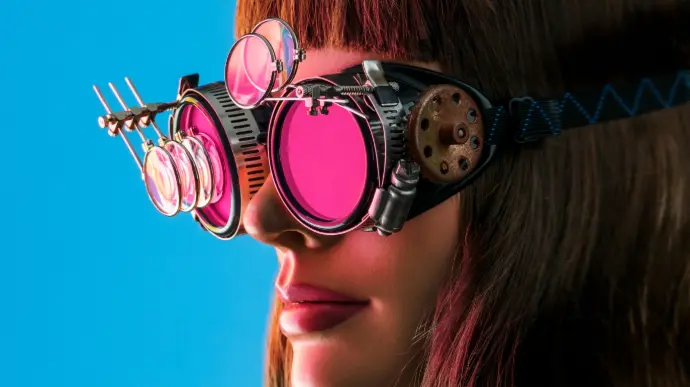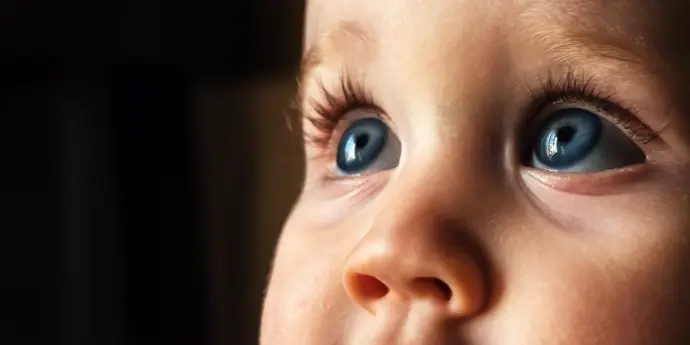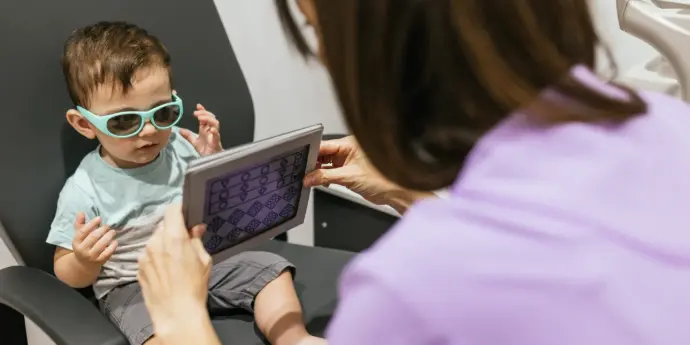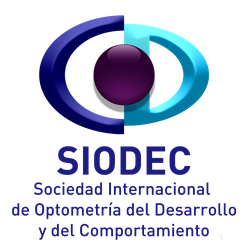Vision and Optometry
What is optometry?
Optometry is a health discipline that deals with the prevention, evaluation, diagnosis, and treatment of disorders of the visual system.
From the perspective of the behavioral model, optometry considers vision as a process that integrates with the other senses, allowing for a holistic observation of the patient. This facilitates the evaluation of behavior and the development of the visual system in relation to its environment.


Vision
Vision encompasses more than just seeing clearly; it is the ability to recognize, interpret, and understand the visual information that surrounds us.
The process of vision development begins in the womb, around the 20th week of gestation, and at the time of birth, it is not fully developed. This ability is refined over time and is closely related to motor development from day one. Although most of its progress occurs from birth until the end of the preschool stage, it has been shown to continue evolving into adulthood. It is crucial that our visual system functions properly to acquire essential skills that allow us to learn, play sports, and engage in various daily activities.
For this, it is necessary to develop a series of visual skills that progressively develop from birth and during the first 8-12 years of life, helping us understand the world around us. In the event that these skills have not been adequately developed, they can be trained through a personalized visual therapy and rehabilitation program.
It is important to highlight that 17 visual skills are needed to properly perform tasks such as reading, learning, sports, and writing. Let's take a look at the most important ones:

Control of eye movements
It is the ability to move the eyes accurately and smoothly. This includes:
- Track moving objects (tracking).
- Quickly shift the gaze from one point to another (saccadic).
- Fixing the gaze on an object without losing focus (fixation).
These skills are key for activities such as reading or playing ball sports.

Accommodation or focus
There are different types of accommodation:
- Focus change: It is the ability to adjust vision from far to near and vice versa without the image appearing blurry.
- Maintenance of focus: It is the ability to maintain a clear vision for an extended period on the work plane, without fatigue. This is essential for reading, studying, or switching between distances effortlessly.

Binocular vision
It is about using both eyes at the same time to combine the images from each eye into one.
- The eyes need to be aligned at a distance in a single image.
- We need to maintain this alignment over time.
- It is necessary to align the eyes for near vision.
- You need to maintain this alignment of the eyes up close.

Central vision
This is known as visual acuity, a fundamental ability that allows us to observe and appreciate the details of our environment with great clarity and precision, which is essential for carrying out various daily activities.

Peripheral vision
It is the ability to perceive what is happening on the sides while we focus on a central task. It is a useful skill for driving, playing sports, or simply being aware of your surroundings.

In-depth vision
It is what allows us to see in 3D. Thanks to this ability, we perceive depth, see the world "in relief," and calculate distances. It only works if both eyes work together.

Color perception
The ability to distinguish and recognize the different colors that surround us is essential for proper interaction with the visual world, as it allows us to appreciate the beauty of nature and objects. This is possible as long as there is no condition such as color blindness or color vision deficiency, which can significantly affect this perceptual ability.

Gross motor movement
The ability to move skillfully in a given space, avoiding collisions with the surrounding objects. It is largely based on vision, which acts as the main guide to direct each of those movements in a precise and controlled manner.

Fine motor movement
Ability to perform tasks such as writing, sewing, or buttoning a button.

Visual perception or shape analysis
To be able to see what is happening around you and make sense of it. There are several skills:
- Visual discrimination: Recognizing the differences between similar objects, shapes, words, letters, and numbers, and knowing which is which.
- Visual memory: Remembering what has been seen, such as an address or someone's face.
- Visual constancy of shapes: Identifying an object even when it changes in size, position, or color.
- Figure-ground: To see a figure and clearly distinguish it from the background where it is located. For example, finding a specific garment in a drawer full of clothes.
- Visual closure: Identifying an object or figure even if you don't see all the details, like recognizing a word even if some letters are missing.

Integration skills
- Visuomotor integration: Coordinating what you see with your movements, whether it's something large like throwing a ball or something small like writing. It is essential for both sports and having clear handwriting.
- Visual-auditory integration: Combining what you see with what you hear. For example, associating words with images or sounds.
For all these reasons, it is very important to conduct a comprehensive evaluation with an optometrist who assesses all these areas. This not only helps to prevent and detect potential problems but also to address them before they interfere with the development and potential of the child and/or adult. Timely detection can make a significant difference.
If your daughter/son or you have problems in any or several of these areas, you should seek an optometrist in our directoryso that a complete evaluation can be performed on him/her.
